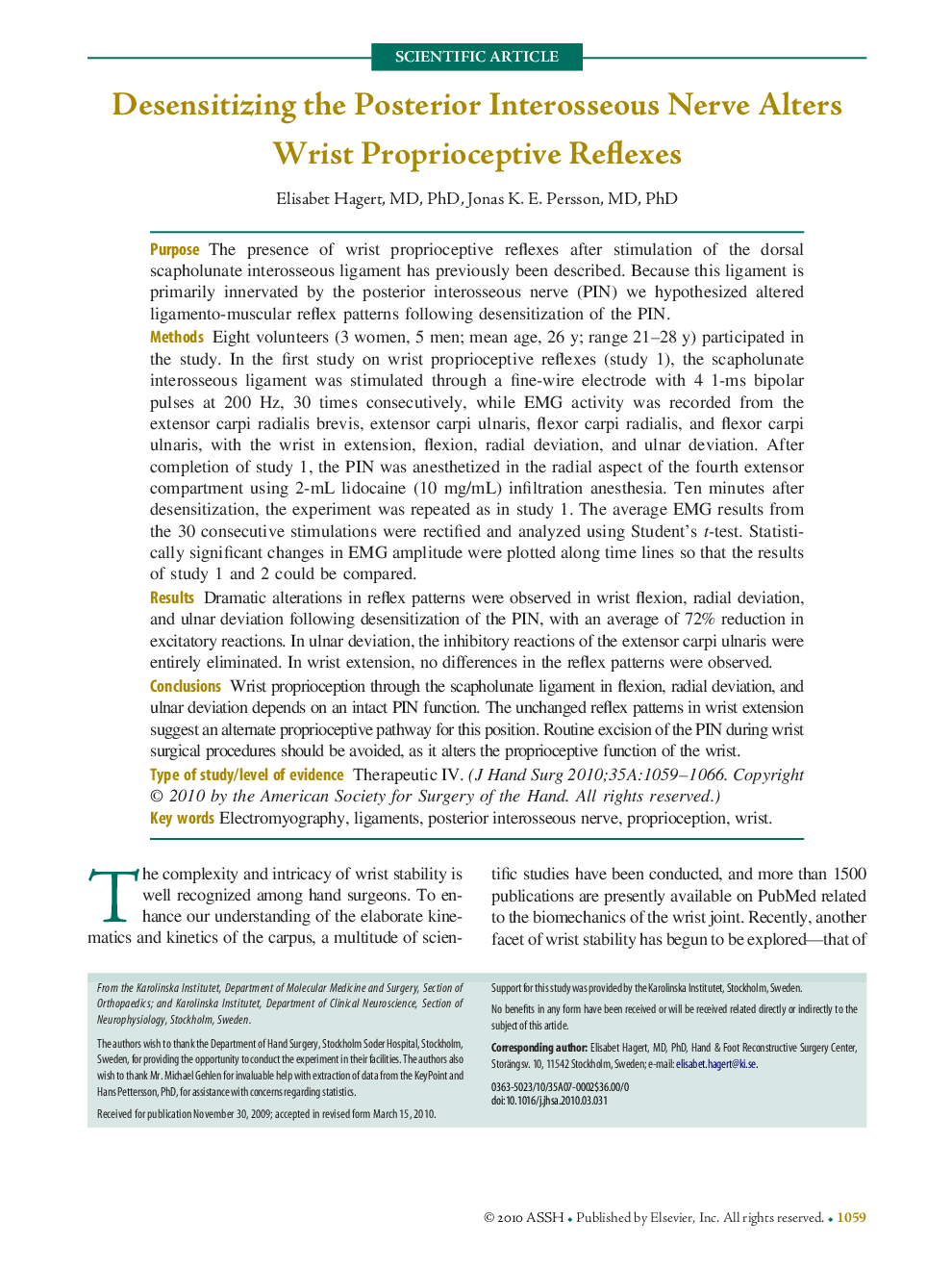| Article ID | Journal | Published Year | Pages | File Type |
|---|---|---|---|---|
| 4070228 | The Journal of Hand Surgery | 2010 | 8 Pages |
PurposeThe presence of wrist proprioceptive reflexes after stimulation of the dorsal scapholunate interosseous ligament has previously been described. Because this ligament is primarily innervated by the posterior interosseous nerve (PIN) we hypothesized altered ligamento-muscular reflex patterns following desensitization of the PIN.MethodsEight volunteers (3 women, 5 men; mean age, 26 y; range 21–28 y) participated in the study. In the first study on wrist proprioceptive reflexes (study 1), the scapholunate interosseous ligament was stimulated through a fine-wire electrode with 4 1-ms bipolar pulses at 200 Hz, 30 times consecutively, while EMG activity was recorded from the extensor carpi radialis brevis, extensor carpi ulnaris, flexor carpi radialis, and flexor carpi ulnaris, with the wrist in extension, flexion, radial deviation, and ulnar deviation. After completion of study 1, the PIN was anesthetized in the radial aspect of the fourth extensor compartment using 2-mL lidocaine (10 mg/mL) infiltration anesthesia. Ten minutes after desensitization, the experiment was repeated as in study 1. The average EMG results from the 30 consecutive stimulations were rectified and analyzed using Student's t-test. Statistically significant changes in EMG amplitude were plotted along time lines so that the results of study 1 and 2 could be compared.ResultsDramatic alterations in reflex patterns were observed in wrist flexion, radial deviation, and ulnar deviation following desensitization of the PIN, with an average of 72% reduction in excitatory reactions. In ulnar deviation, the inhibitory reactions of the extensor carpi ulnaris were entirely eliminated. In wrist extension, no differences in the reflex patterns were observed.ConclusionsWrist proprioception through the scapholunate ligament in flexion, radial deviation, and ulnar deviation depends on an intact PIN function. The unchanged reflex patterns in wrist extension suggest an alternate proprioceptive pathway for this position. Routine excision of the PIN during wrist surgical procedures should be avoided, as it alters the proprioceptive function of the wrist.Type of study/level of evidenceTherapeutic IV.
